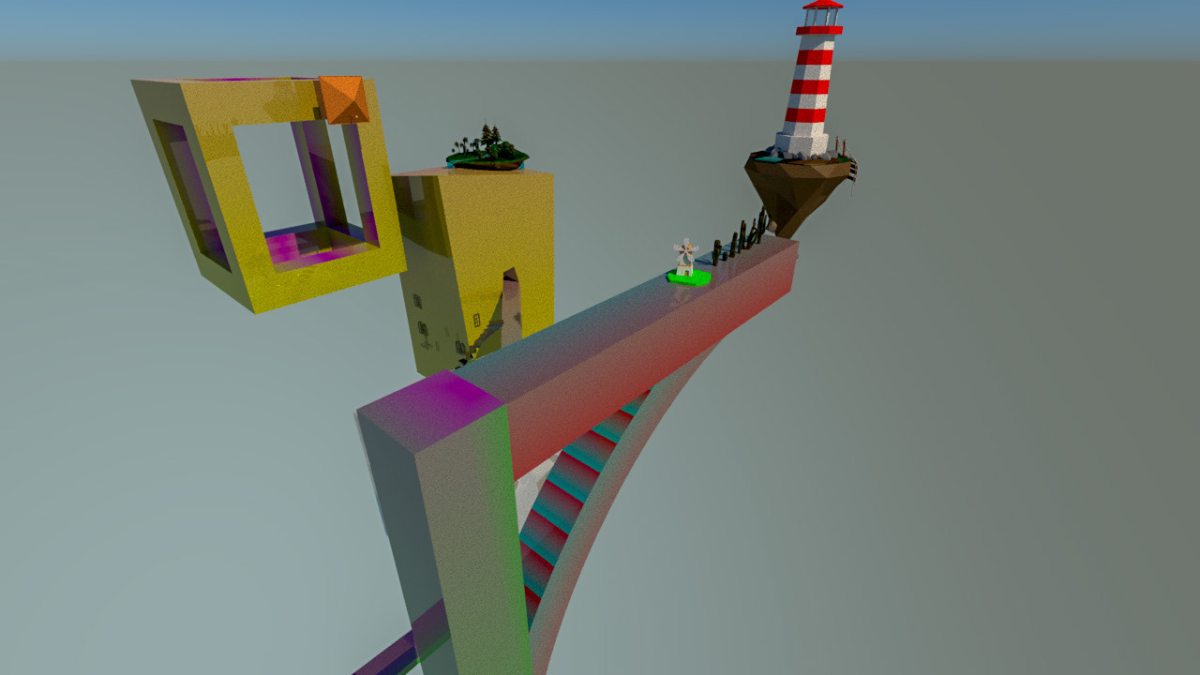
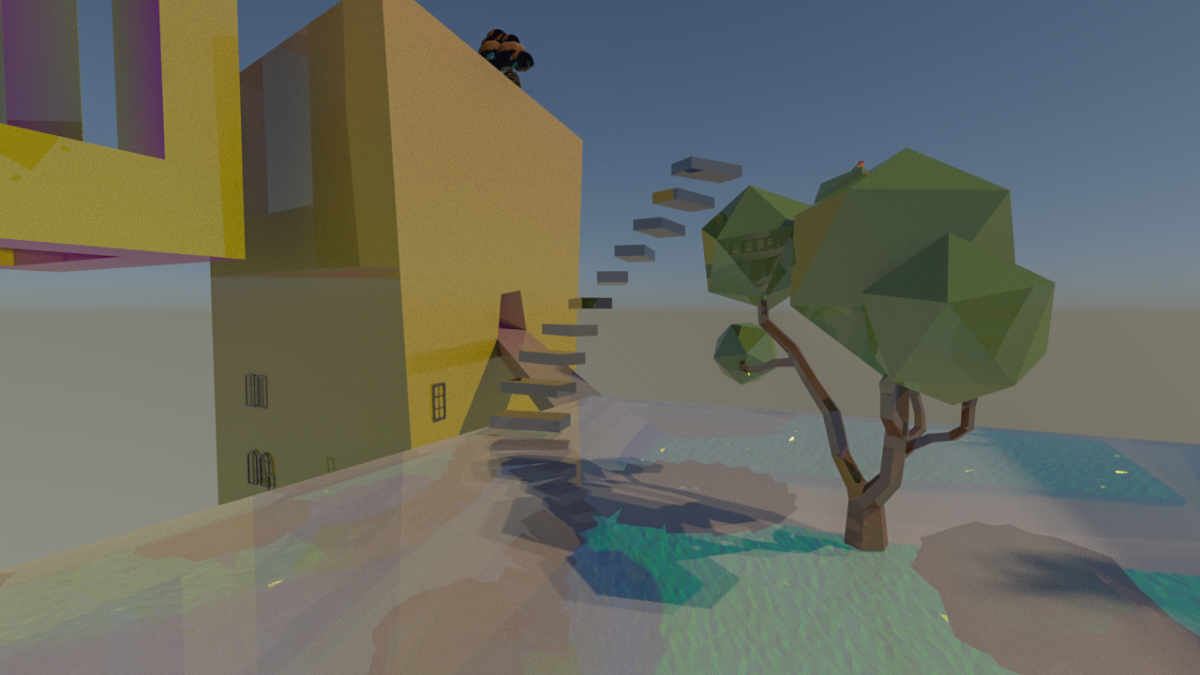
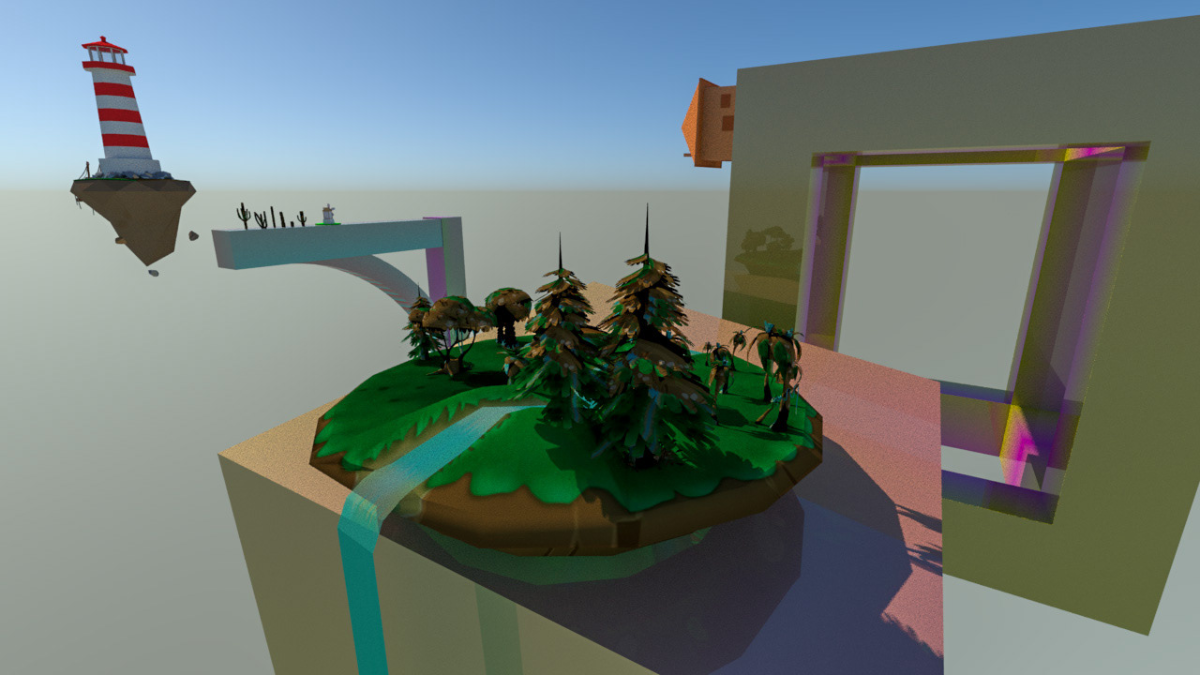
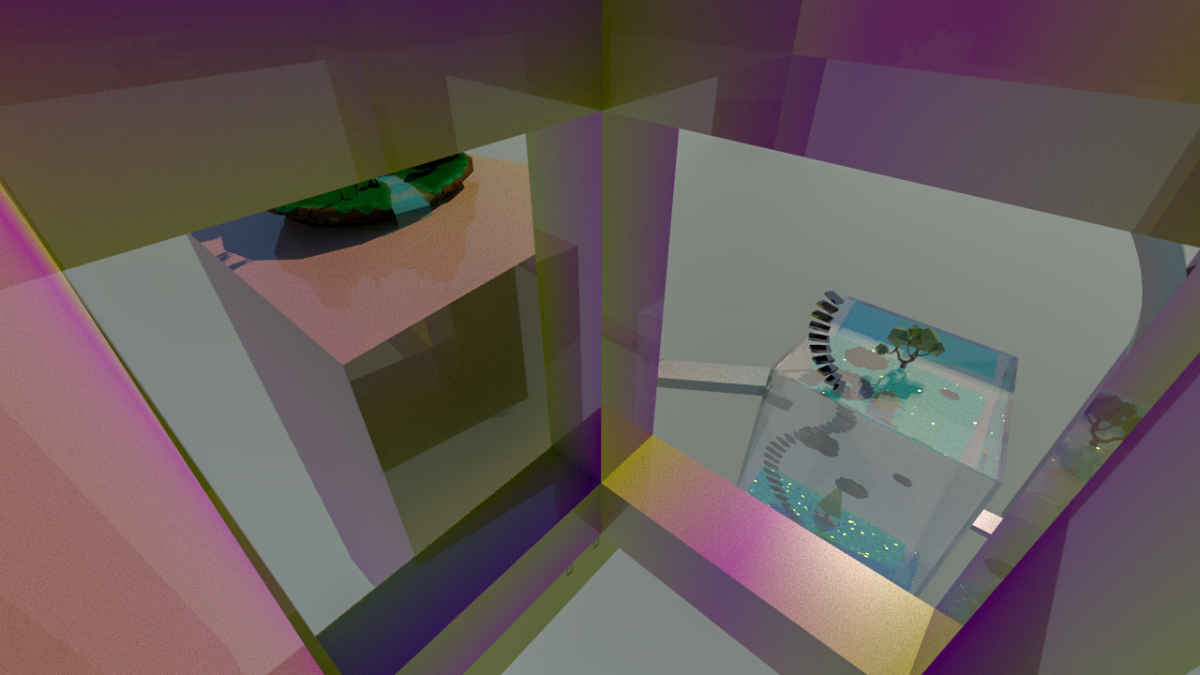
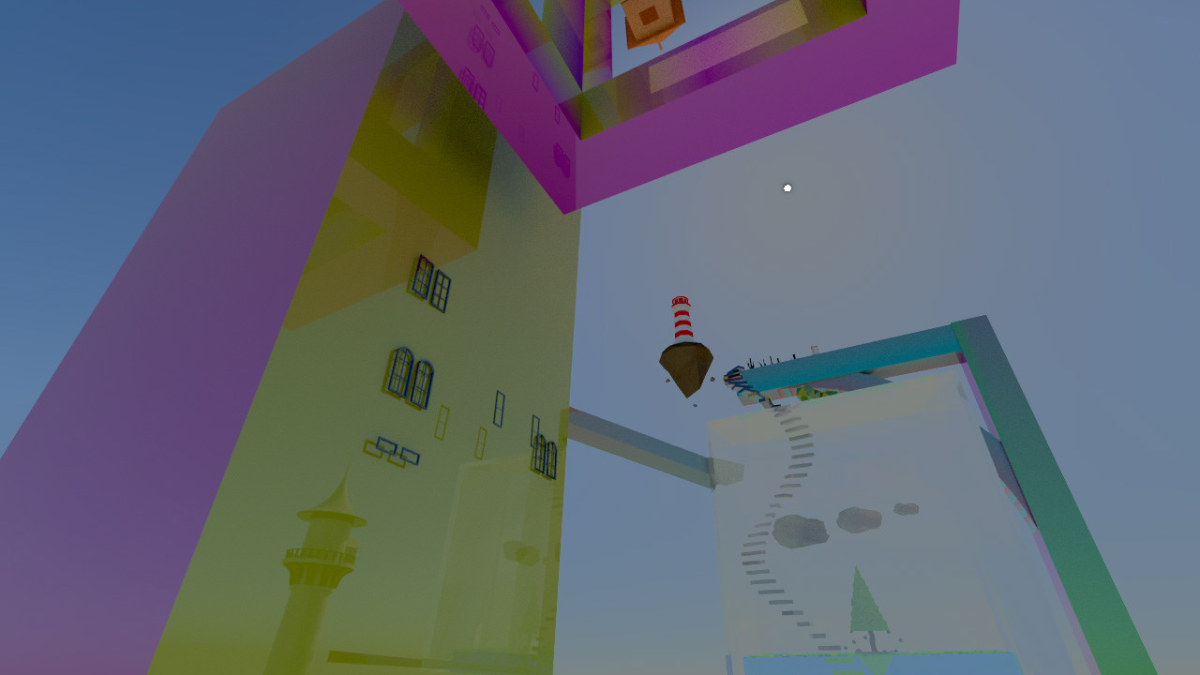

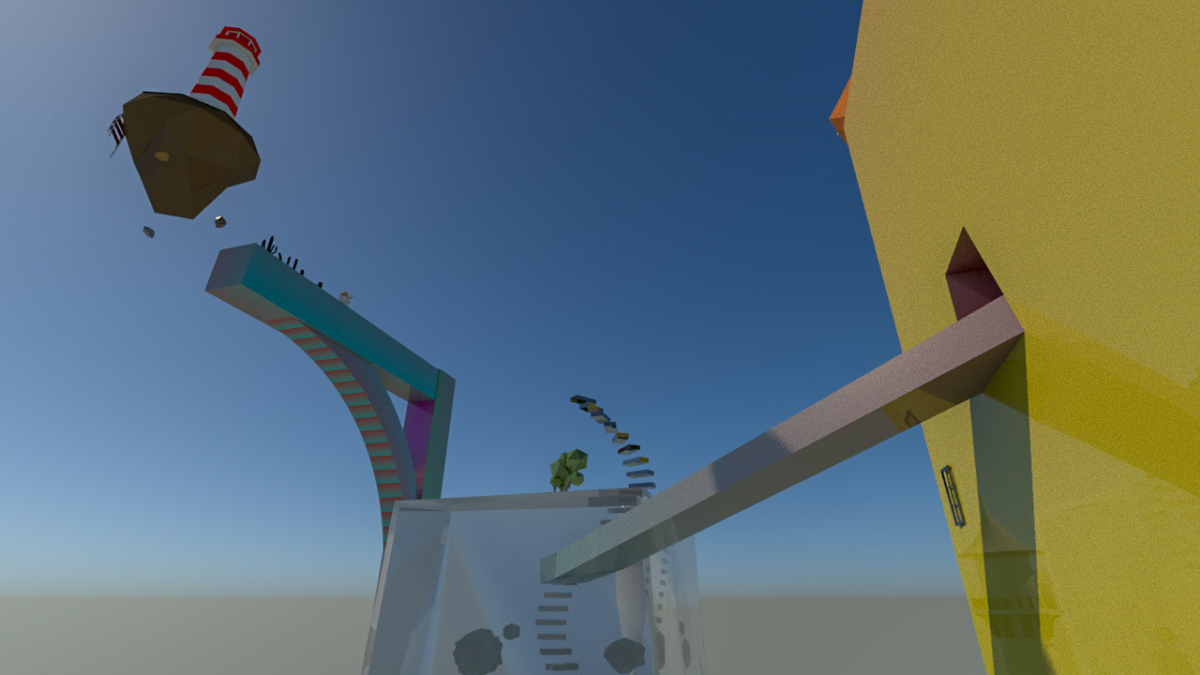
A 3D space created for a digital VR immersive experience mimics the visual sensation of cubism oil paintings.
This project is inspired by early 20th-century cubism paintings. The early 20th-century pioneers often used a flat and static canvas to describe a dynamic movement in a three-dimensional space. To some point, the process is not very dissimilar to unwrapping a UV map from a computer 3D geometry. With all my respect to the avant-garde artists of their time, compared to cubism paintings, which paint all four dimensions (three dimensions of space plus one dimension of time) onto a two-dimensional canvas, I had always thought the use of motion pictures such as movie or animation is a better tool in representing a moving object in a finite time frame. Even better, 3D-modelled spaces with the ability to immerse the spectators into a VR environment could be the holy grail to what cubism artists were looking for a century ago.
The environment in the VR space reflects the cubism oil-paintings style — the 3D modelling with different angled cubic spaces linked with staircases, archways and bridges. The observer would be able to travel from one cube to another, with each cube showing its own unique interiors. Some of the cubic structures are semi-transparent, yet others might be opaque.
The whole structure is floating in the air with a boundless space. The sun and moon shine simultaneously around the floating cubes in their opposite direction, representing daylight and nightlight.



